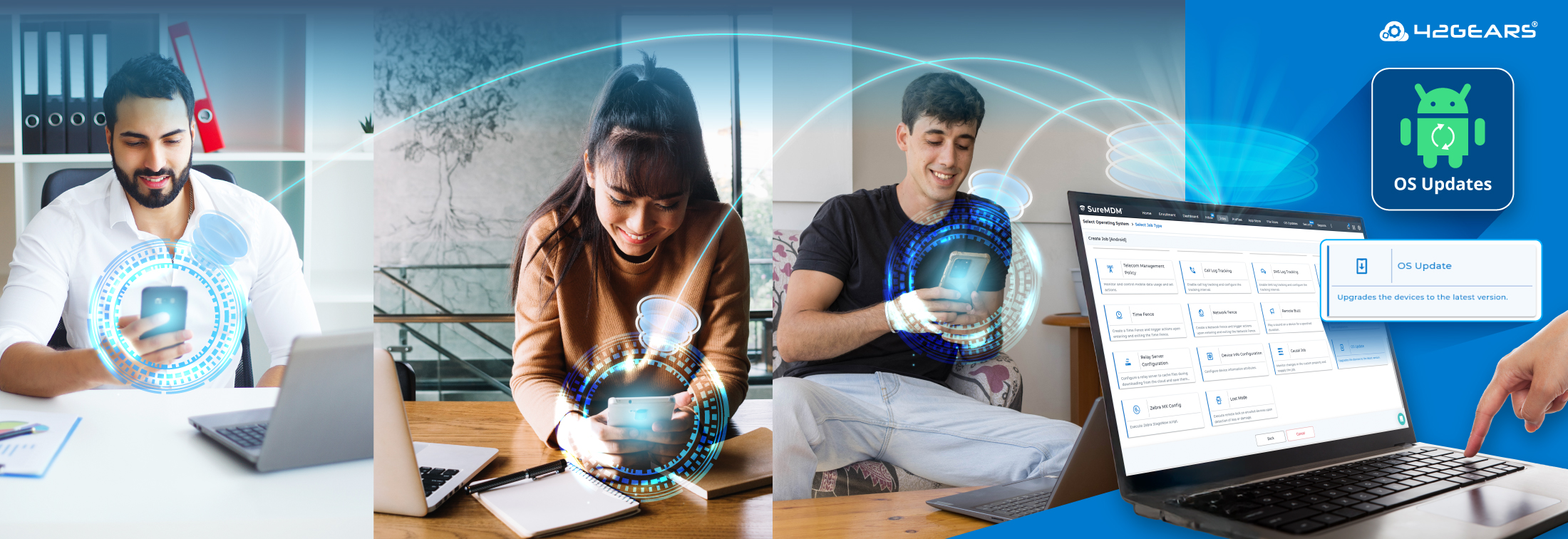Simplify Android OS Updates Across Your Fleet
Jun 12, 2025 | Nareddy Saivikas Reddy
As an IT admin, you would know that manually updating Android devices across a business fleet is time-consuming, frustrating, and risky. From missed security patches to inconsistent app behavior, unmanaged Android updates can quickly lead to bigger problems.
If your organization relies on Android phones, tablets, or rugged devices, you know how critical it is to keep them running smoothly and securely. That’s where SureMDM comes in.
With SureMDM, you can upload the Android OS update file and push it directly to enrolled devices—no cables, no manual intervention, no chaos—just efficient, centralized control over your Android updates.
Why Is Managing Android OS Updates Important?
Keeping devices up to date isn’t just about staying current—it’s about maintaining business continuity and minimizing risk. Here’s why it really matters:
Security Protection
Outdated operating systems are vulnerable to known exploits. Android security updates are released regularly to fix these threats, and missing them could expose sensitive company or customer data. By pushing Android OS updates via SureMDM, you ensure every device is protected—no excuses.
Better Device Performance
Each OS update typically includes bug fixes, performance enhancements, and optimizations. Devices that lag behind tend to experience more crashes, battery drain, and slowdowns. OS updates help keep productivity high and user frustration low.
App Compatibility
Business-critical apps often rely on certain OS versions. Older systems may not support the latest app versions or features, leading to compatibility issues. Keeping OS versions aligned ensures apps run reliably across your fleet.
Uniformity Across Devices
When all devices are on the same OS version, IT teams spend less time troubleshooting inconsistencies. Standardization reduces fragmentation and simplifies policy enforcement, app testing, and support.
Compliance Made Easy
In regulated industries, device updates may be tied to compliance. Pushing updates centrally helps maintain audit readiness and ensures your mobile environment meets industry standards.
How to Push Android OS Updates with SureMDM
✅ Step 1: Prepare the Update File
Obtain the official Android OS update package (typically a .zip or .bin file) from the device manufacturer or your internal build team. Ensure it’s verified and compatible with the target device models.
✅ Step 2: Log into the SureMDM console
- Navigate to the Job section and “Android OS Update Job”
- Add the OS update file url
- Save it
✅ Step 3: Deploy to Devices
Select the devices or groups that need the update.
Check our step-by-step instructions on how to perform Android OS updates
Push the job immediately or schedule it for off-hours to minimize disruption. Monitor job status to ensure successful deployment. From the Device Grid dashboard, you can ensure that the OS version is updated successfully.
And that’s it! With just a few clicks, you can roll out OS updates across hundreds—or thousands—of Android devices without leaving your desk.
Final Thoughts
Ensuring devices are running on latest Android updates is not optional—it’s essential. Whether you're securing devices, boosting device performance, or ensuring app stability, regular OS updates are a key part of enterprise mobility management.
With SureMDM, pushing Android OS updates becomes a simple, scalable, and secure process. No more manual headaches. No more inconsistent device states. Just better control and peace of mind for your IT team.
If you’re already using SureMDM, try this feature out today. If not, it’s time to explore how it can transform your device management game.
Push latest Android updates in
minutes, not hours—with SureMDM
Subscribe for our free newsletter


